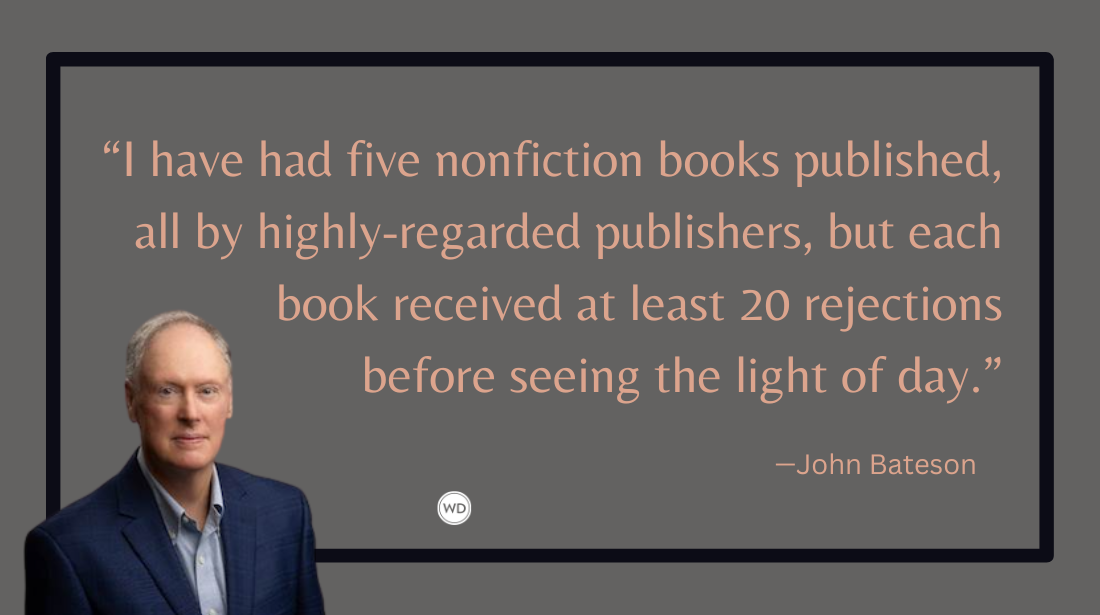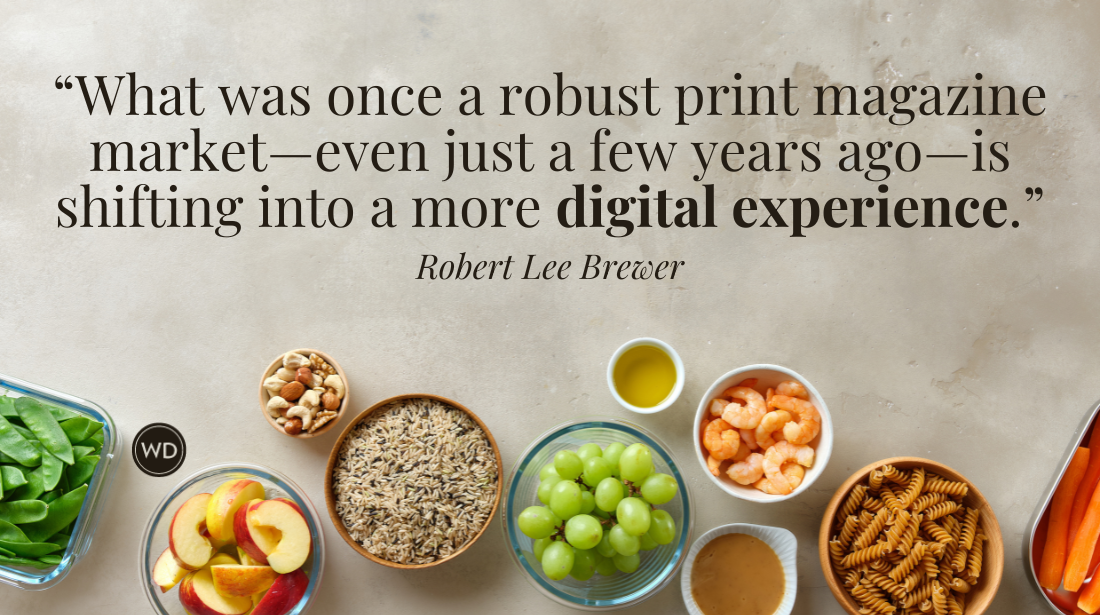Copywriting: A Crash Course for Writers Looking to Break In
The market for freelance copywriting is bigger than ever—and so is the potential to break in. Put your writing skills to work on the side, and you might just hit the jackpot. Athena Schultz shares how.
Do you know what Dashiell Hammett, F. Scott Fitzgerald and Dorothy Sayers had in common? Besides being among the world’s finest novelists, they all turned their talent into profit early in their careers as advertising copywriters.
While they had to toil full time at ad agencies, lucky for us, the Internet came along and changed the industry. Today, you don’t have to live in a major metropolis or even change out of your sweats to break into copywriting. If you familiarize yourself with the basics, draw on your creative writing skills and commit yourself to some practice, it’s well within your reach to bring in extra income as a freelance copywriter.
The High Demand for Copywriting
The dry-cleaning flyer you got in the mail. Your inbox full of emails from retail stores. That news website’s banner ad touting the latest hybrid vehicle. Copywriters are the people who craft the text for this sort of persuasive communication. And their copy is used virtually everywhere—on social networking sites, in catalogs, even on shampoo bottles. Once you realize copy isn’t limited to magazine ads and TV spots, you begin to understand how huge the industry is—and that it’s a gold mine for those with a love of words and the motivation to use that passion to make some cash.
While there are still many copywriters working full time at ad agencies, the real area of opportunity for new writers is through freelance work for a wide variety of companies, including retailers, banks, magazines, universities, health-care providers and many others. There’s virtually no industry that doesn’t utilize copy in some form.
So what does it take to get those assignments? As a creative writer, you already have many of the required skills, from a talent for language to a facility with grammar. And the adage that readers make the best writers also holds true for copywriters. A big part of writing effective copy is being able to utilize familiar themes that course through our culture, so being an avid book, magazine, newspaper and even blog reader will work in your favor.
All told, becoming a copywriter is just a matter of learning the basics of the industry, and using the skills you already possess to write about products and services in a way that gets readers in the mindset to buy.
*****
Writing is your passion. Why not make it your day job, too? Whether you’re an aspiring screenwriter, novelist or playwright, or even just an avid reader, you can turn your love for words into a lucrative career as a professional copywriter. Learn how to become a copywriter by building your portfolio and marketing your services through this online workshop.
*****
A Crash Course in Writing Copy
To prepare to apply for copywriting work, your first step is to create a few spec ads to send to potential clients. Spec is short for speculation, which typically means the writer submits completed work for publication consideration, rather than by assignment. However, writing on spec in the copywriting world works a bit differently than in other industries. Your spec ad will not be bought by the company or agency you submit it to; rather, it serves as a sample of your copywriting ability.
But even though you’re writing a spec ad, that doesn’t mean you should make up a fake product to write about. In fact, quite the opposite: You should choose well-known companies for your specs to best demonstrate that you’re able to write in the established voices of brands.
To get started, browse through a magazine or your inbox. Clip or print a few ads that you think are especially effective, and then choose a few that seem to come up short. Both types will serve a purpose in our crash course on ad writing.
The key is this: While an advertisement can be as short as a few sentences or as long as three or more pages, every form of copy must get the consumers’ attention, communicate benefits, appeal to their emotions or desires, and impel them to take action.
What (or who) is AIDA?
An easy way to remember this is through the classic marketing and sales acronym AIDA:
1. Attention. The ad’s headline (usually in larger and/or bolder type than the rest of the copy, sometimes with a subhead or tagline that supports it) must grab the reader’s attention and convince her to read further.
2. Interest. The first part of the ad’s body copy should fulfill the promise of the headline and convey the benefits of the product or service in a way that holds the reader’s interest.
3. Desire. The second half of the body copy has to appeal to the reader’s wants and needs, and produce a positive emotional response.
4. Action. The final part of the ad must be a line or two telling the reader exactly what to do, with a sense of urgency (for example, visit a website now or call for more information today). This is the call to action.
Now that we’ve covered the basics, look again at the effective ads you chose. Break down each one into the AIDA elements, and analyze how the copywriter used them to write a successful ad. Exactly which words or phrases interested you? Why did they work so well?
Once you see what makes for appealing ad copy, it’s time to look at your pile of less successful ads to identify their flaws and come up with ideas to make them better. Did the copywriter miss a step in AIDA? Fail to grab your attention with the headline? Forget a compelling call to action? Make notes on what didn’t work.
Now, pick one to rewrite. This will be the first spec ad you create to seek copywriting work. Start by brainstorming 10–20 alternate headlines that are in line with the concept of the ad. Pick your top five and get the opinions of friends or family members on which headline is the most effective.
Then, write the body copy, keeping AIDA in mind. Picture a specific customer and write your ad directly to her. Use the character development skills you’ve acquired as a creative writer to give this person a name and face, a career and family. What’s important to her? Why would she want the product? How can you speak to her wants, needs and desires? How will the product help her? Sticking to the same length as the original ad, close with an urgent call to action.
The next step—and it’s essential—is to walk away from your copy for at least 24 hours. With fresh eyes, you’ll spot areas for improvement. When you have a draft you’re proud of, have someone read it to you. If your reader sounds like a robot or trips over any lines, you have more rewriting to do.
Repeat the process with two more ads. When you’re finished, gather them all into a single plain-text document—no images, fancy fonts or formatting. You’re not applying for graphic design work, so refrain from inserting clip art or pictures of any kind. Let your copy shine on its own.
There are two ways to approach the formatting of your spec portfolio: You can either include your text-based spec ads alone, or scan the original ads and pair them with your work for comparison. Create a “Spec Copywriting Portfolio” title page with your name and contact info. Then, save the document as a PDF file. You now have a spec portfolio to submit to prospective clients.
Breaking In
The first order of business is to draft a cover letter explaining that you want to transition into copywriting, and that you’re willing to do whatever it takes to create copy for the company. If you have any other writing experience, be sure to mention that. But don’t worry about the fact that you’re a new copywriter. Be honest about it and show them how it will work to their advantage. Think of your cover letter as an ad you’re writing about yourself, emphasizing the benefits of hiring you. And do it with some personality—they’ll see how you sell yourself, and how you can do the same thing for their company. You’re excited, hungry and ready to write for them. They must have you!
The next step is to get some simple business cards printed with your name, contact information and the title “Freelance Copywriter.” Carry them with you at all times and talk to everyone you know about your new venture. Plenty of people need copywriting services or know others who do, so you’ll always want to be ready with your card.
The most direct route to a published piece is to offer your services pro bono to a nonprofit. These organizations need everything from flyers to website copy—and it’s a win-win to volunteer for a good cause while you build your portfolio. Local charities are often the most in need (and easiest to approach). Visit their office or email them your cover letter and specs, and offer to help with copy. You can also use sites such as TaprootFoundation.org and VolunteerMatch.org, which pair skilled individuals with organizations looking for business assistance.
Once you have some pro bono work experience and have added those published clips to your portfolio, you’re ready to seek out paying gigs. Before you hit the pavement, both concrete and virtual, you should have an idea of what to charge for your services. While there’s a huge rate range for copywriters (varying by things like experience level, project and location), new copywriters can generally charge $30–45 an hour. Of course, there’s no reason not to take a few lower-paying jobs when you’re starting out in order to gain experience. These will also help you see how long it takes you to complete a project, so you can accurately quote project timelines and fair rates in the future.
To seek out those paying clients, begin by canvassing small businesses in your area and inquiring about which tools they use for marketing their companies to the community. You’ll find that many of them are in desperate need of assistance and could use a writer like you to help them create handouts, flyers, postcards, sales letters, website copy, emails and more. (Many businesses, and places like the library, also have community boards or tables where you can post a flyer advertising your services or leave some business cards.)
You can also broaden your search online. Start with job sites specifically for freelancers, such as Freelance-Switch, Elance, Guru, oDesk, Creative Hotlist and FreelanceWritingGigs.com. You’ll also find opportunities on less specific job boards, such as Indeed (which performs a search for job openings across the Web according to your unique specifications, including title, location and salary range), CareerBuilder and Monster.
It can be scary to dive into what feels like a completely foreign industry. But remember that as a creative writer, you already have a background that’s a perfect fit for copywriting. As soon as you get started with a pro-bono gig, you’ll quickly have advertising work that’s been published, and you’ll be on your way to becoming a freelance copywriter.
*****
This article was written by Athena Schultz, a professional copywriter and former instructor of Break into Copywriting for Writer's Digest University. Check it out here.








